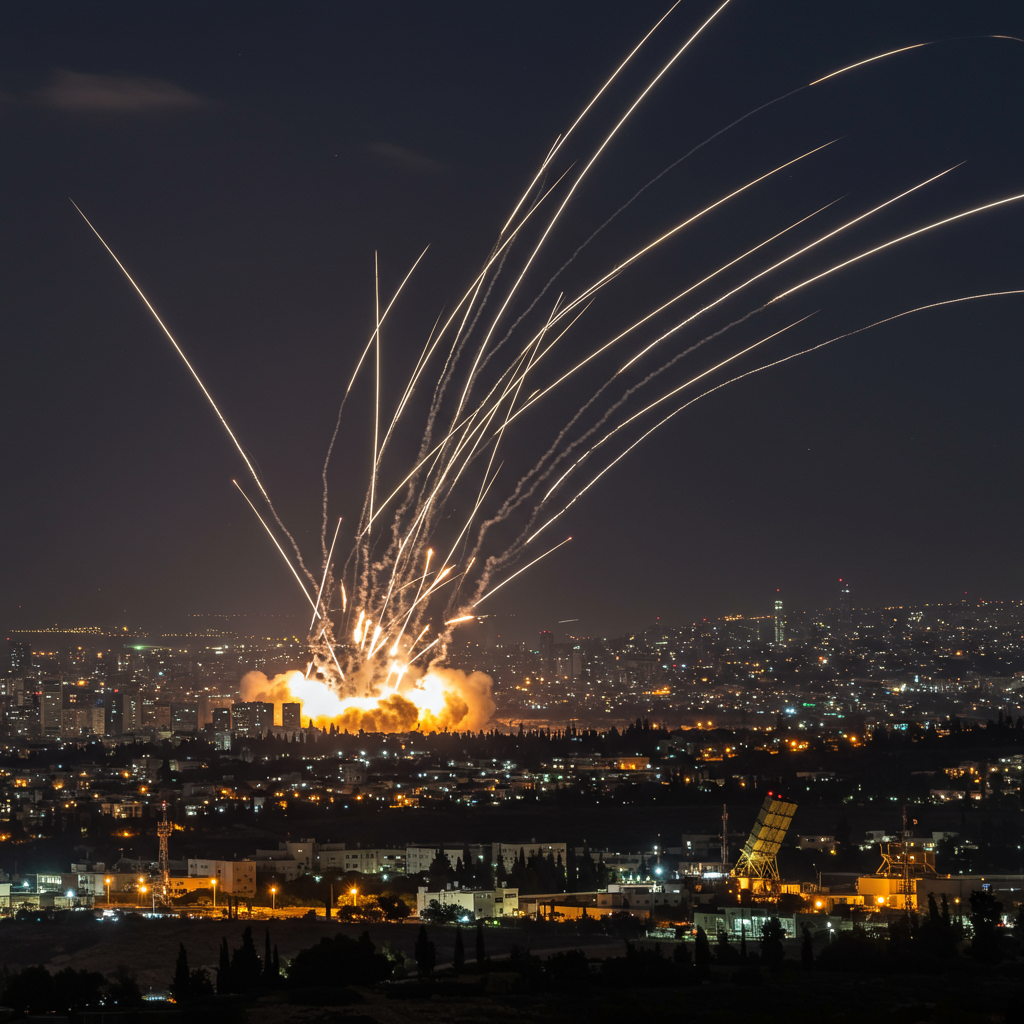The conflict between Israel and Iran has entered its fifth day, marked by escalating military exchanges and significant geopolitical fallout, particularly concerning US President Donald Trump’s stance and the G7 summit.
Trump Dismisses Ceasefire, Seeks “Real End”
Returning from the G7 summit in Canada, US President Donald Trump forcefully denied suggestions he was working on a mere ceasefire between Israel and Iran. He characterized French President Emmanuel Macron’s prior suggestion as “publicity seeking” and stated Macron had “no idea” why he left the summit early. Trump clarified his departure was for reasons “much bigger” than a ceasefire effort.
Instead of a temporary pause, Trump expressed a desire for a “real end” to the conflict, which he defined as a “complete give-up” by Iran. He explicitly denied reaching out to Iran for peace talks, stating Iran knew how to contact him and should have accepted a previous deal. This push for a definitive conclusion is linked to the Iranian nuclear program; Trump wants Iran to “giv[e] up entirely” on nuclear weapons, hoping their program will be “wiped out long before” any potential direct US involvement. He also predicted that Israel would not be slowing its attacks on Iran and issued a stern warning: “the gloves are off” if Iran attacks US troops in the Middle East, promising a forceful response.
Escalating Military Actions Reported
Both sides have reported intense military activity. Iran’s Revolutionary Guards claimed successful strikes on centers belonging to Israel’s foreign intelligence (Mossad) and military intelligence (Aman) in Tel Aviv, asserting targets were “currently on fire.” Iran also claimed to have destroyed strategic positions in Tel Aviv and Haifa overnight using “destructive drones.”
Conversely, the Israeli military claimed a significant blow against Iran, announcing the assassination of Ali Shadmani, identified as Iran’s wartime chief of staff and its “most senior military commander.” Shadmani reportedly assumed the role after the assassination of his predecessor, Gholamali Rashid, by Israeli forces just last week. An Israeli attack on the building of Iran’s state broadcaster IRIB also resulted in casualties, with a staff member, Masoumeh Azimi, dying from severe injuries reportedly caused by the shockwave, and several journalists injured. US defence spokespeople have publicly denied online reports suggesting the US has joined attacks on Iran.
G7 Leaders Affirm Support for Israel
The escalating Middle East crisis overshadowed discussions at the G7 summit. Leaders issued a joint statement affirming their support for Israel’s security and its “right to defend itself.” They labelled Iran as the “principal source of regional instability and terror” and urged a “resolution of the Iranian crisis.” While the statement called for a “de-escalation of hostilities in the Middle East,” including a ceasefire in Gaza, it notably stopped short of calling for a direct ceasefire between Israel and Iran, viewed by analysts as a diplomatic compromise to maintain G7 unity.
Humanitarian Crisis Deepens in Gaza
Amidst the wider regional conflict, the humanitarian situation in Gaza remains dire, with tragic incidents reported involving civilians awaiting aid. In Khan Younis, reports indicate a mass casualty event where Palestinians waiting for aid trucks were targeted. Gaza’s civil defence agency and health ministry reported at least 47 to 51 Palestinians killed and over 200 wounded from Israeli fire, including tank shells and possibly drones, on crowds gathered for food aid.
Dr. Mohammed Saqer, head of nursing at Nasser hospital in Khan Younis, described the situation as “out of control,” with nearly 300 casualties arriving at his hospital alone after being attacked by “tanks” while waiting for food. He highlighted the overwhelming numbers, severe injuries from tank missiles, and critical shortages of medical supplies and staff. This incident follows earlier reports of five Palestinians killed by Israeli forces while waiting for aid in north-west Gaza City.
Regional Impact: Evacuations, Shipping, and Cyberattacks
The conflict has had broader impacts across the region. Heavy traffic was observed departing Tehran following calls from both President Trump and Israel for residents to evacuate ahead of potential bombing campaigns. Reports emerged of Tehran residents stocking up on essentials and facing bank withdrawal limits.
Near the critical Strait of Hormuz shipping lane, two oil tankers collided and caught fire amidst reports of surging electronic interference disrupting navigation systems in the Gulf region, particularly near Iran’s Port of Bandar Abbas. Separately, a cyberattack reportedly crippled Sepah Bank, a state-owned Iranian bank, disrupting its online services.
Several countries have initiated efforts to evacuate their citizens from both Iran and Israel, reflecting international concerns about the escalating tensions. Over 600 foreign nationals from 17 countries have been evacuated from Iran via Azerbaijan, while countries like Slovakia, the Czech Republic, and Thailand are organizing similar evacuations for their nationals in the region.


